Abstract
Pigeons learned to peck a green key on which parallelogram-shapes were projected; they then received generalization tests in which the orientation of the parallelogram was varied. Nondifferential training produced very little eventual stimulus control along the orientation dimension, but when training included S− trials (absence of the parallelogram) subjects responded consistently more to certain orientations than to others. Unlike typical results for visual generalization (e.g., line-tilt), the tilt gradients obtained for this complex stimulus were bimodal, supporting predictions on the basis of human perceptual data. However, unimodal gradients could be produced by specific discrimination training along the orientation dimension. Other forms of intradimensional training also produced relatively steep gradients, often characterized by unexpected but consistent secondary peaks. An attempt to obtain inhibitory gradients (S+: green key; S−: parallelogram on a green background) resulted in virtually zero responding all along the shape-orientation dimension; therefore, specific inhibitory control could not be evaluated. All these experiments suggest that definition of this complex stimulus dimension in terms of mere “angular orientation” is inappropriate, and alternative interpretations are discussed.
Full text
PDF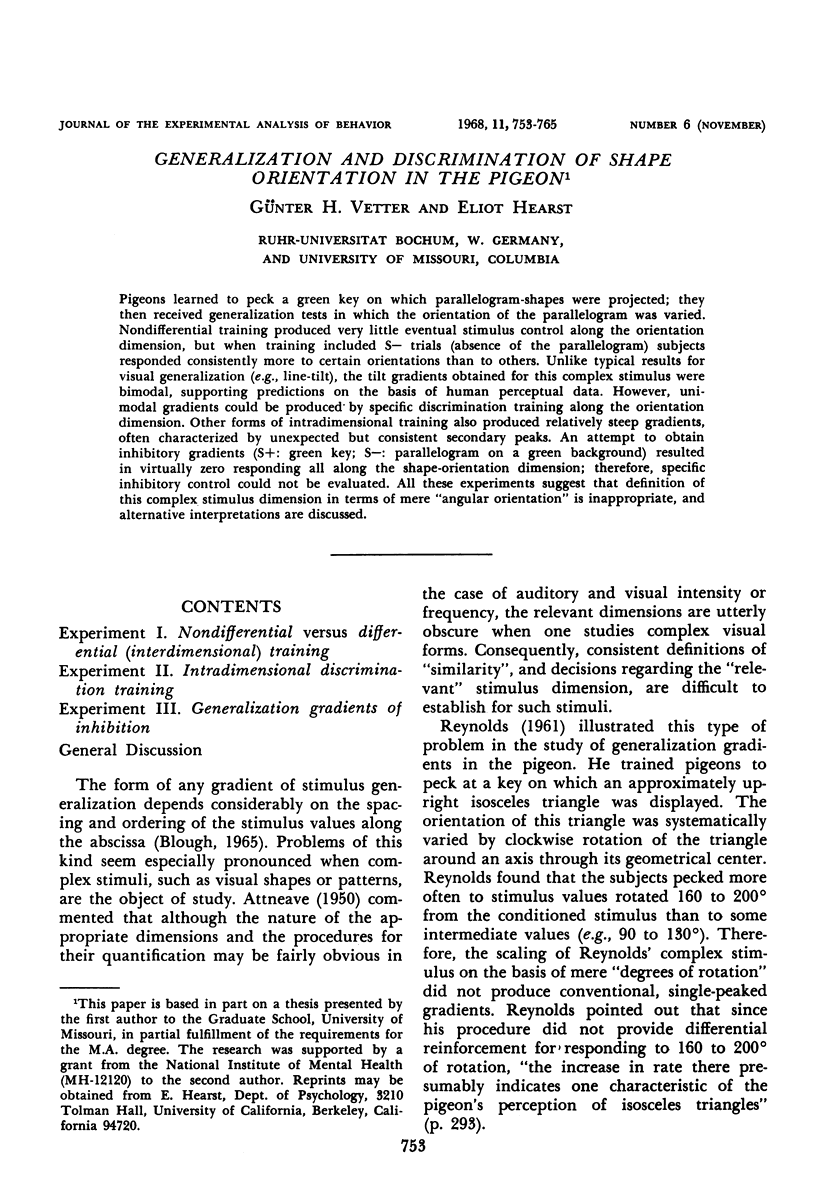
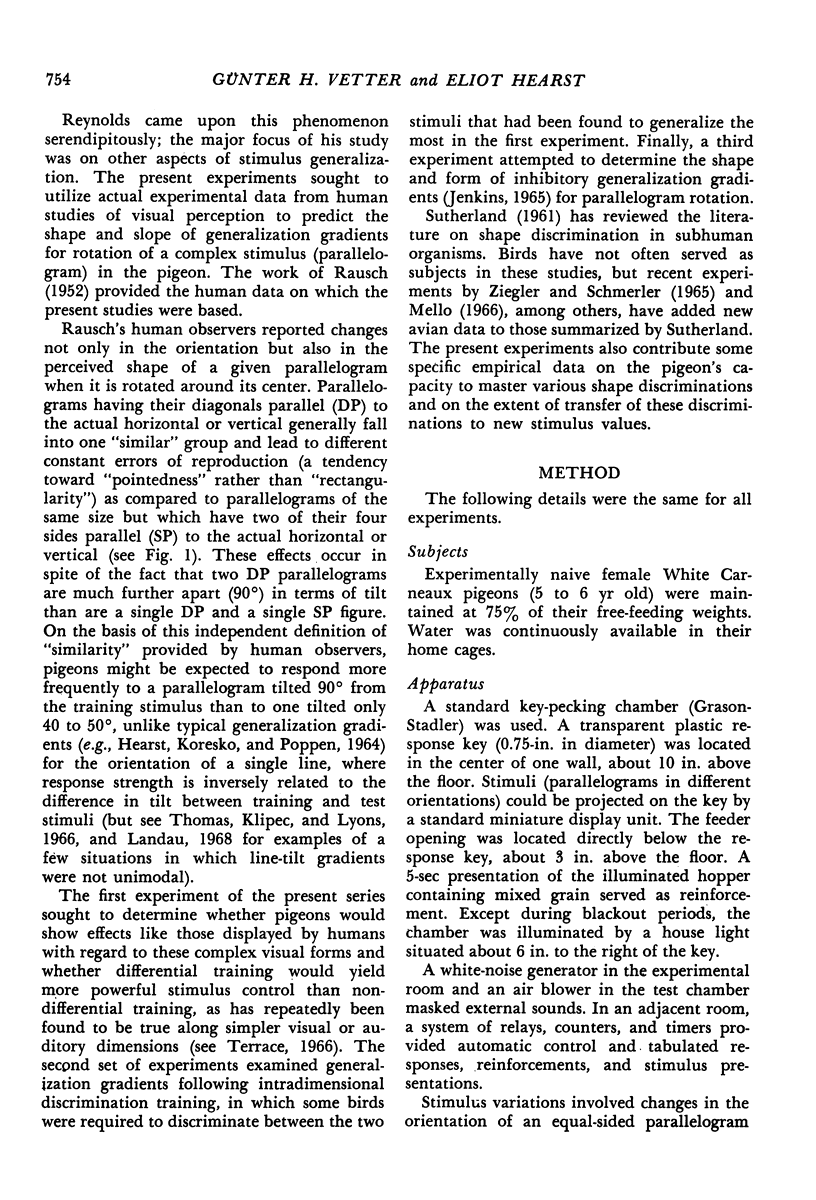
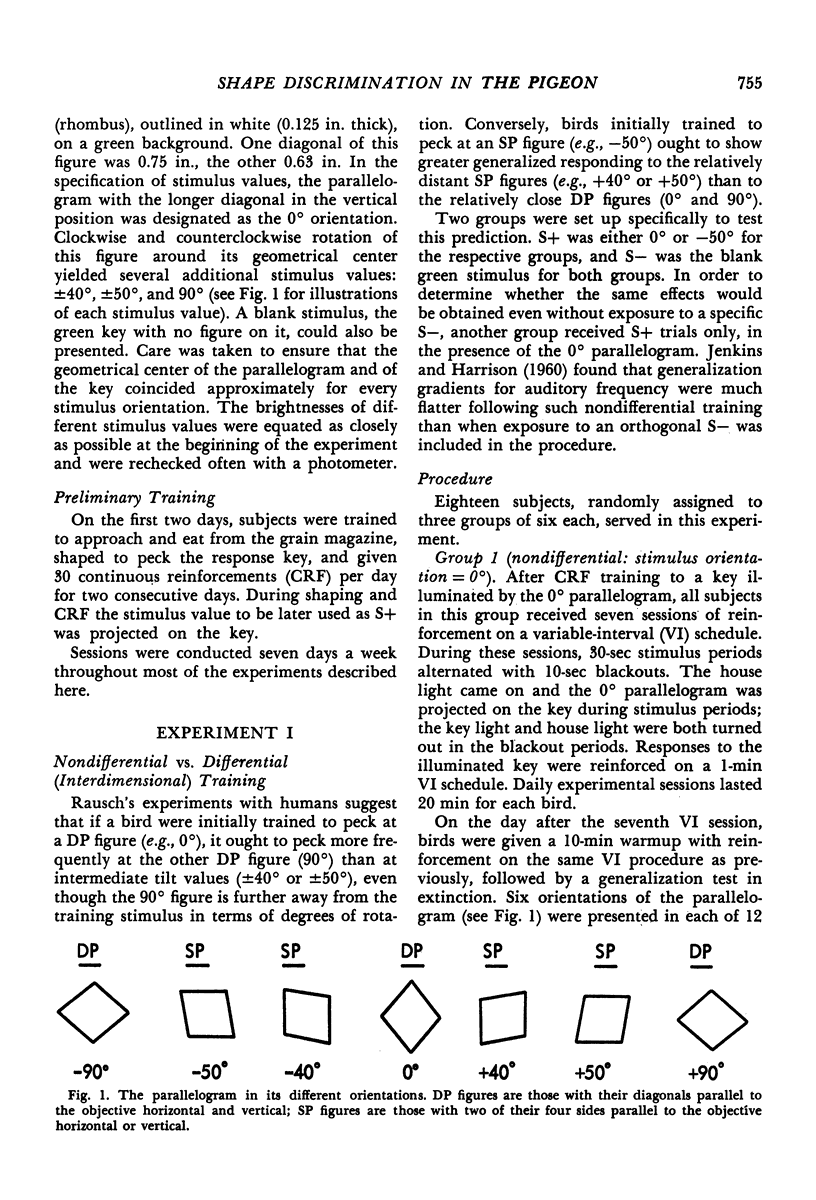
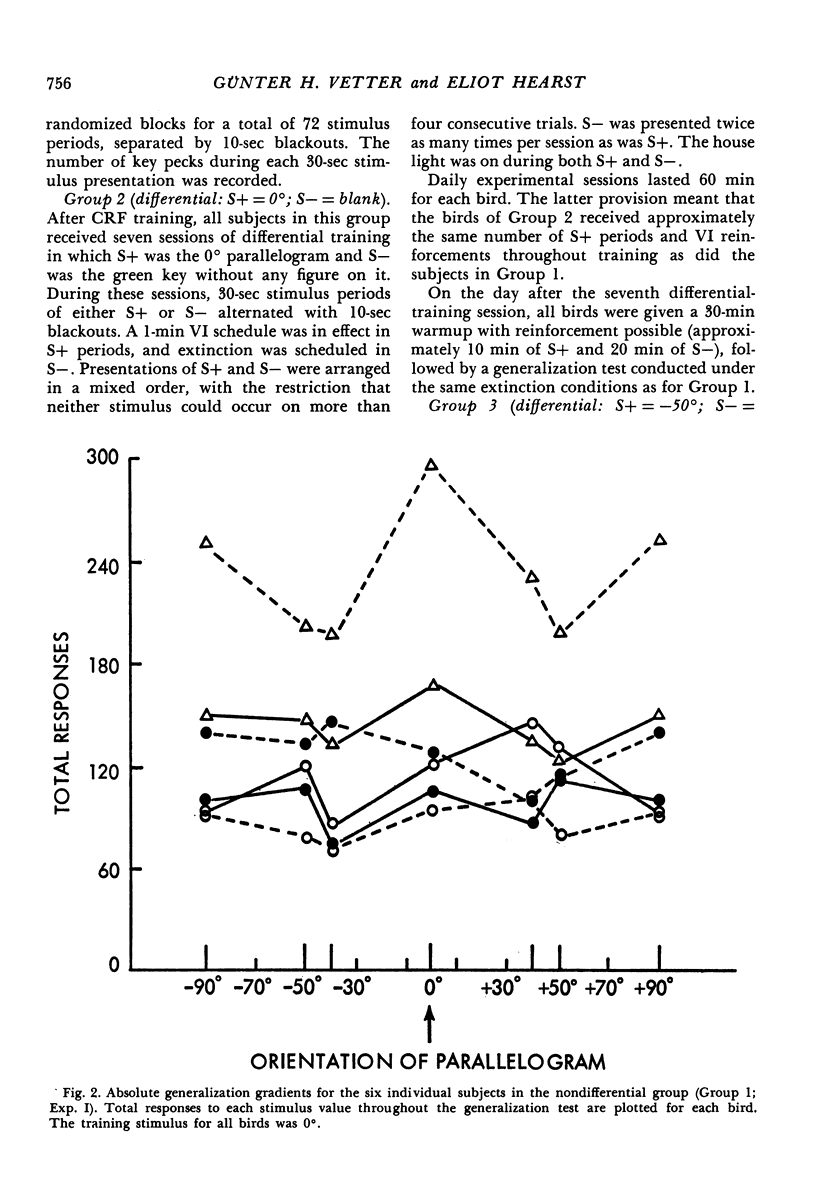
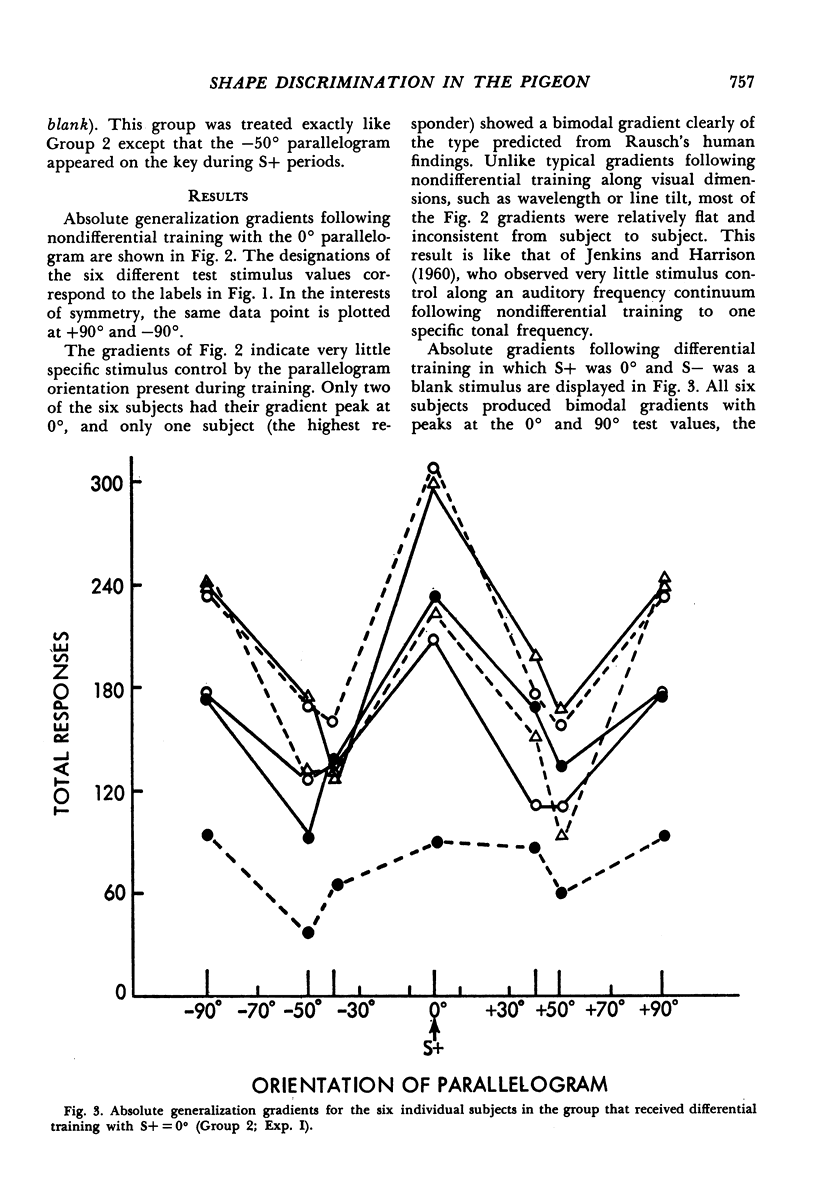
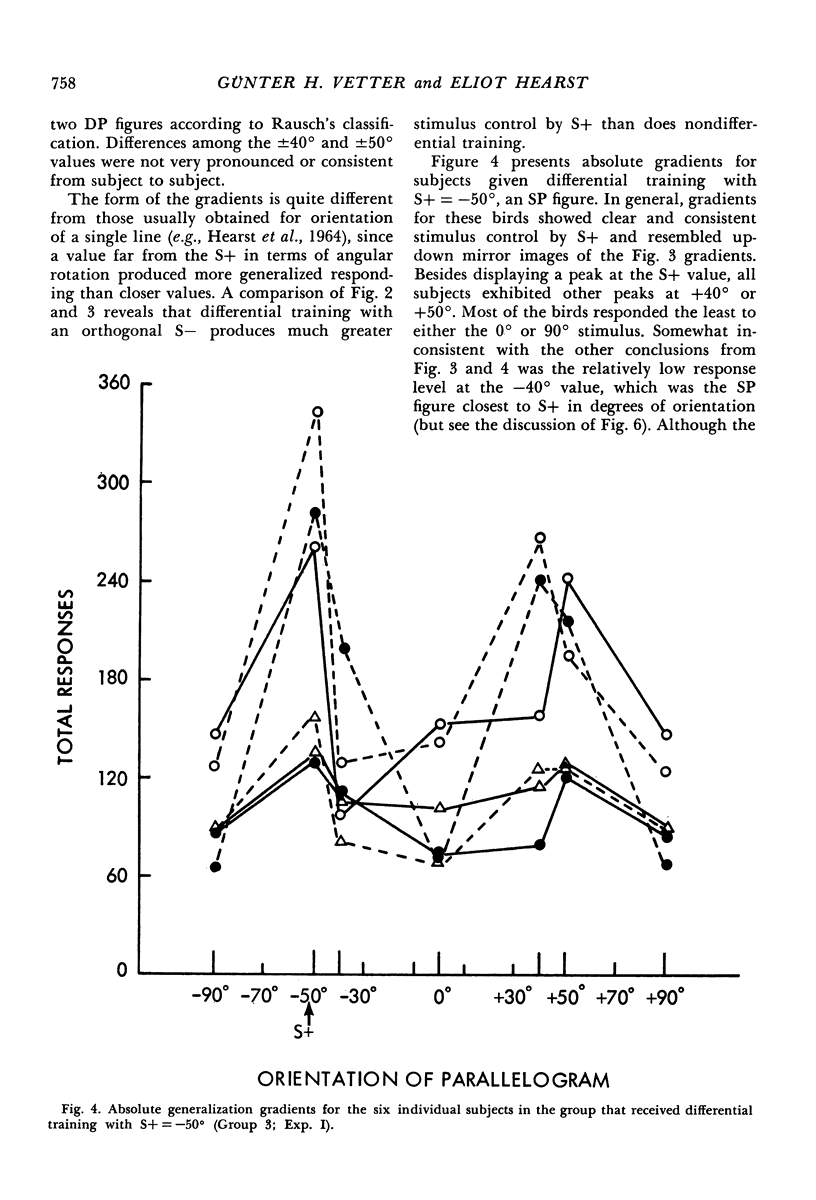
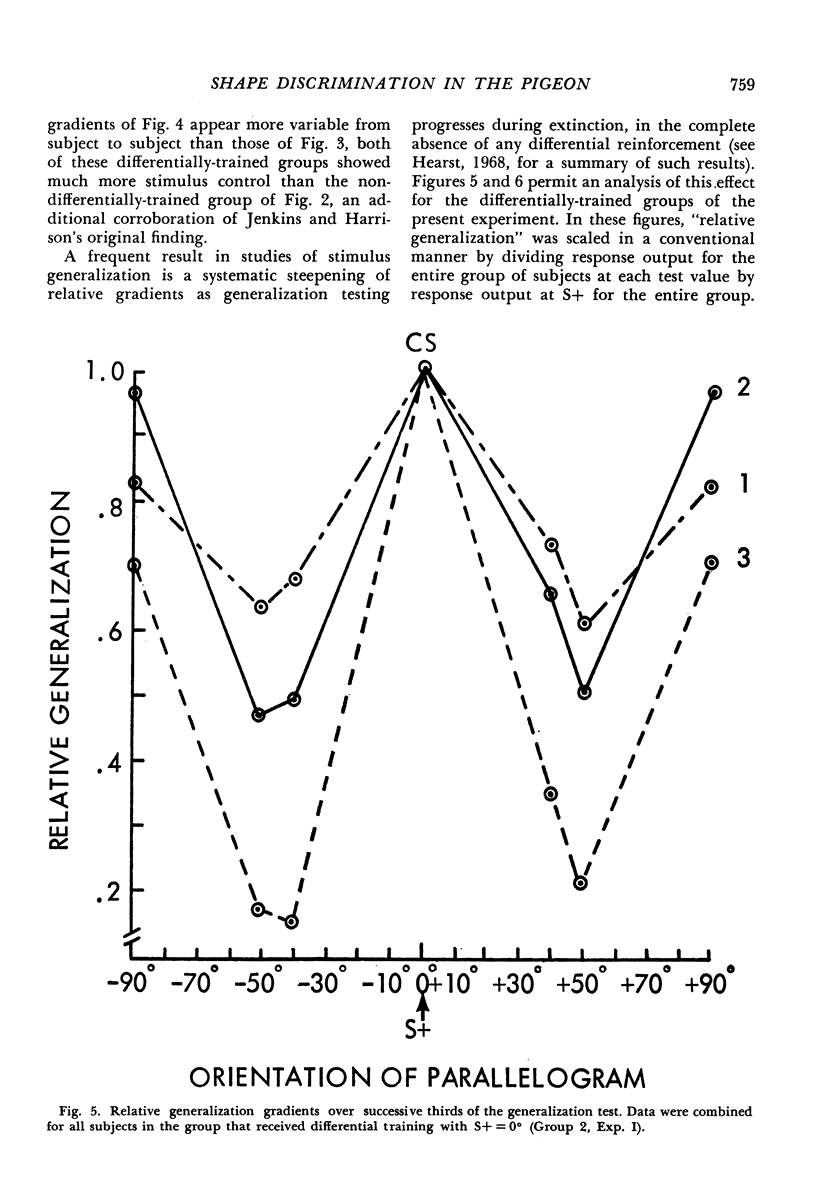
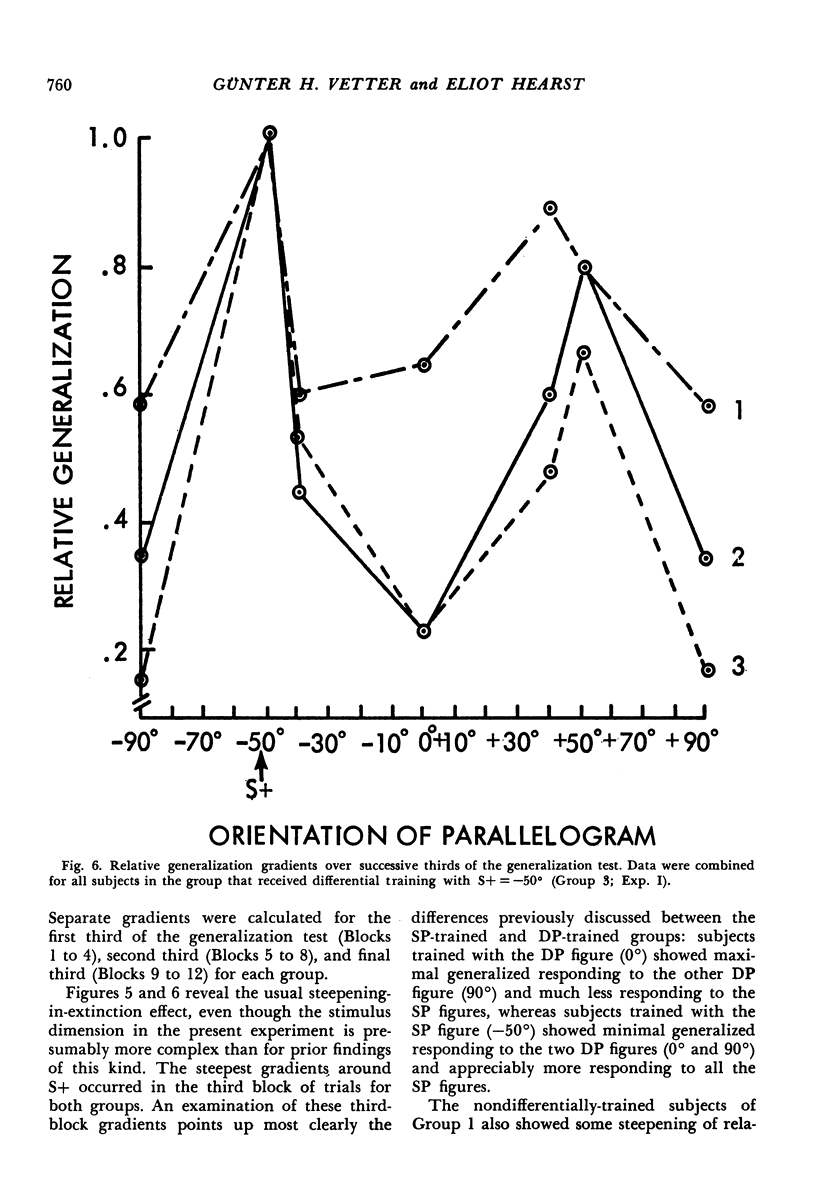
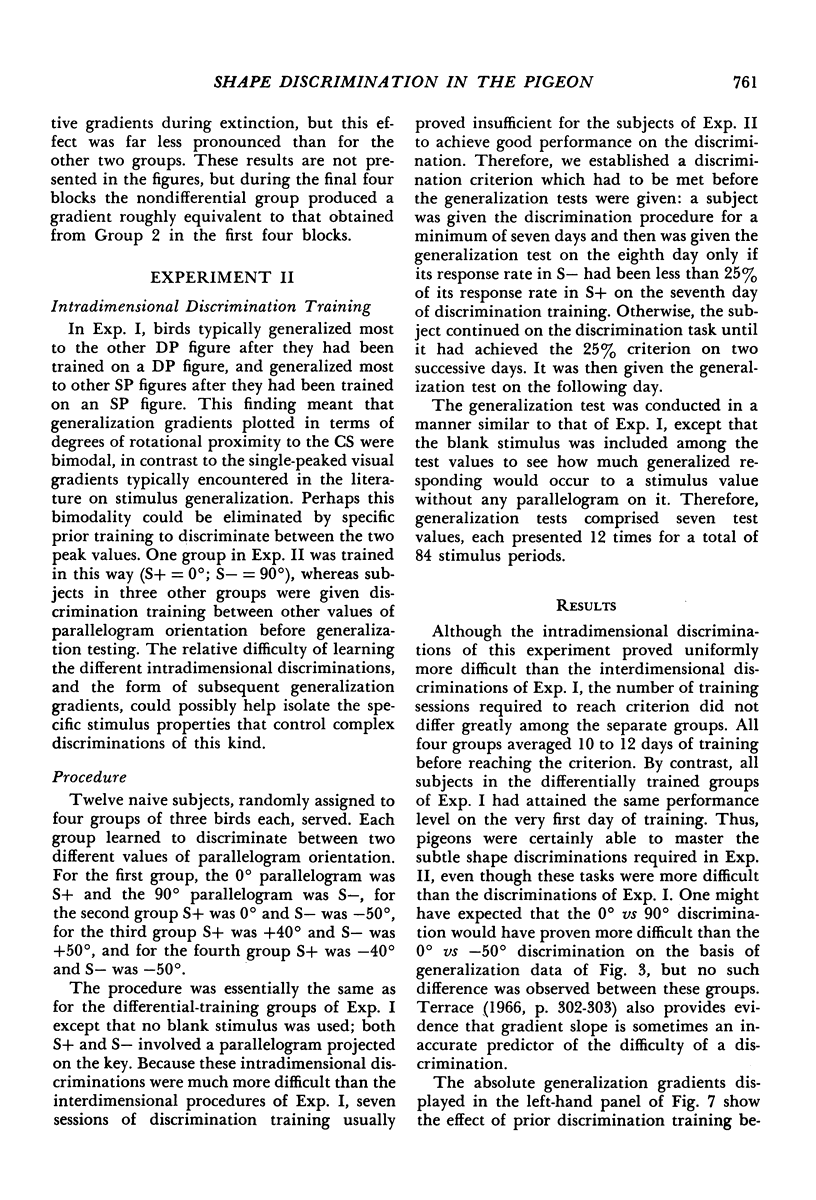
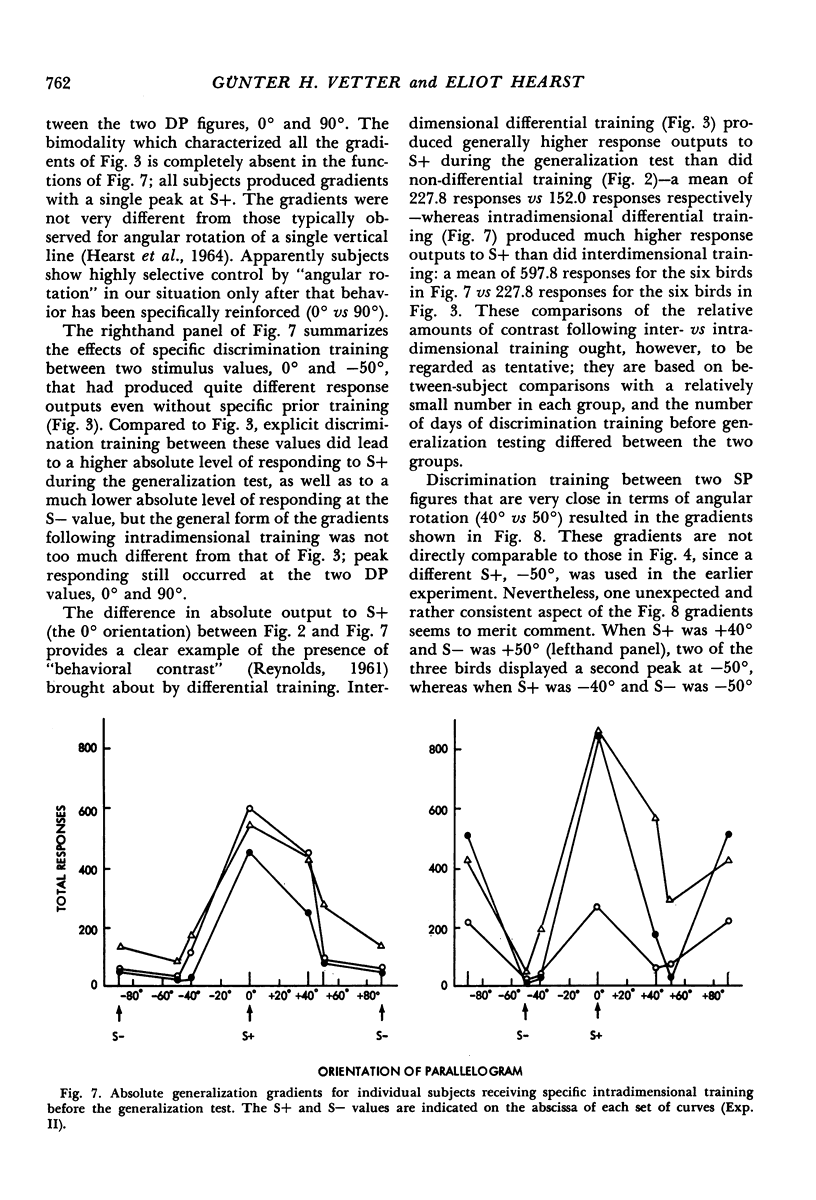
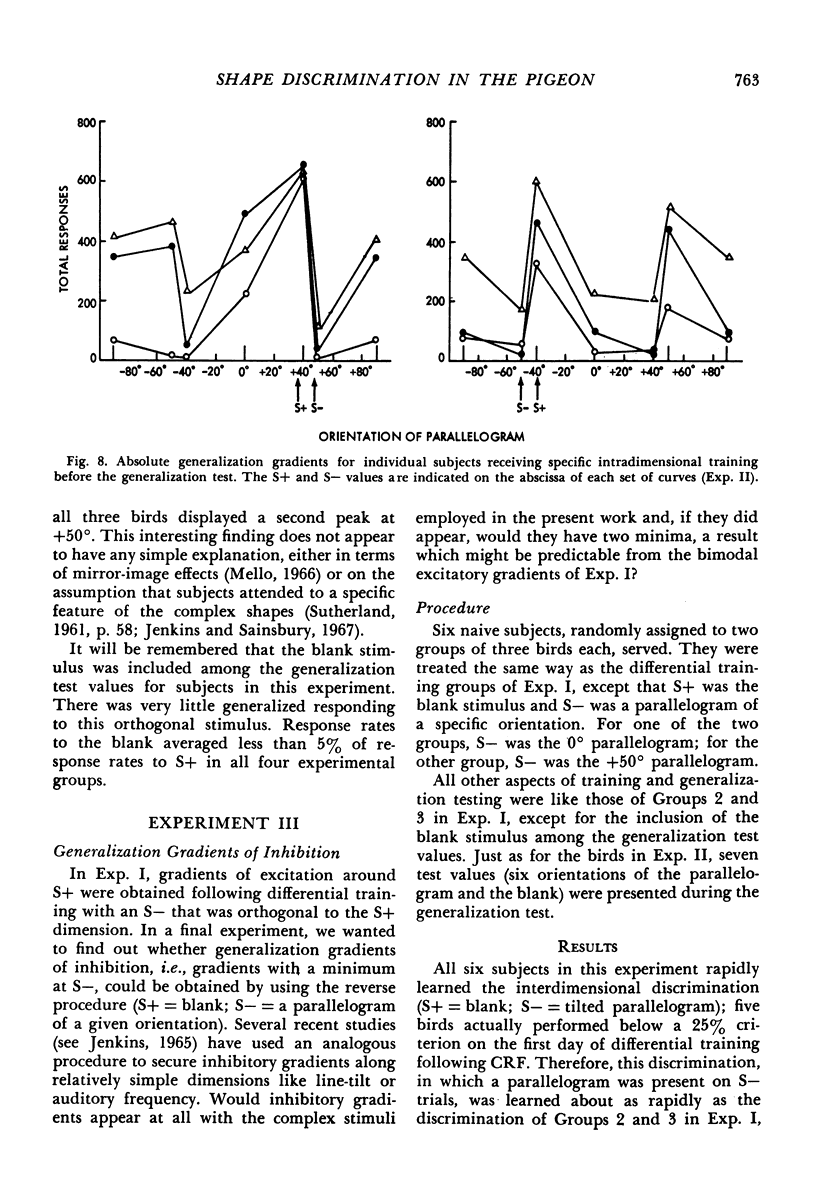
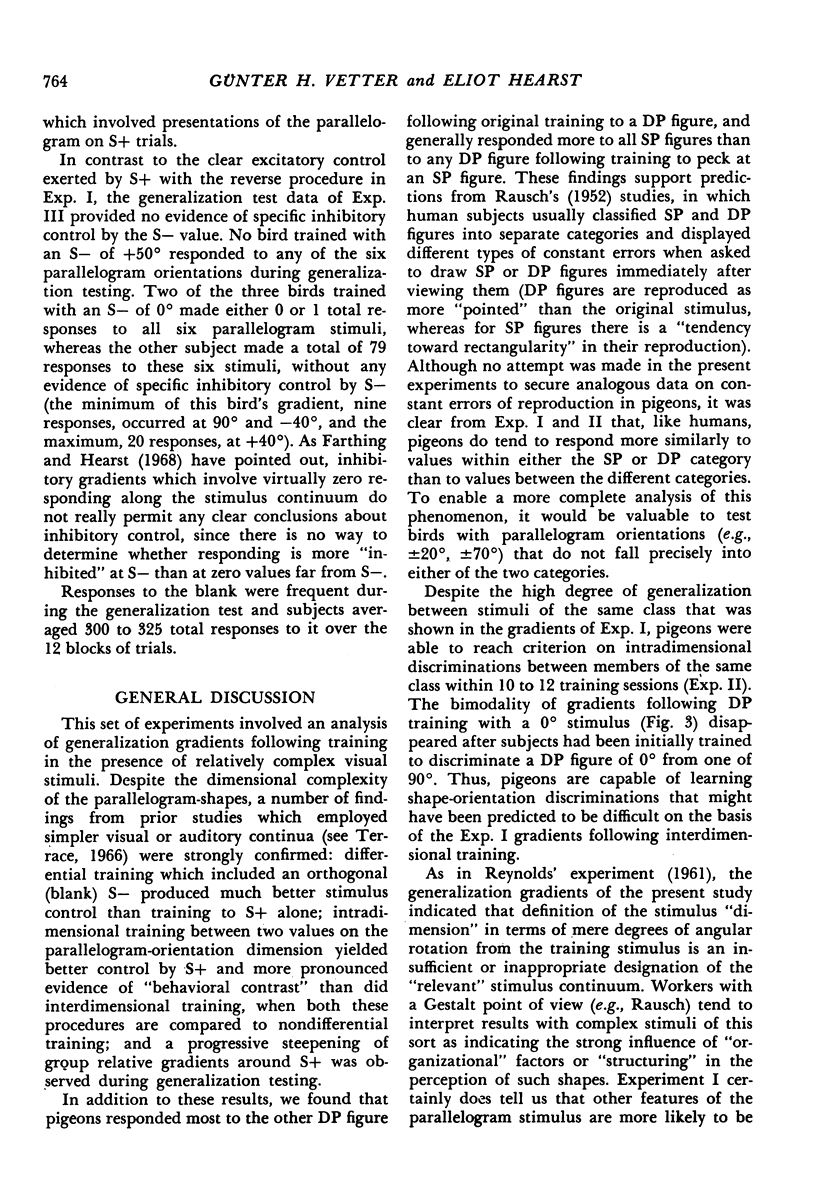
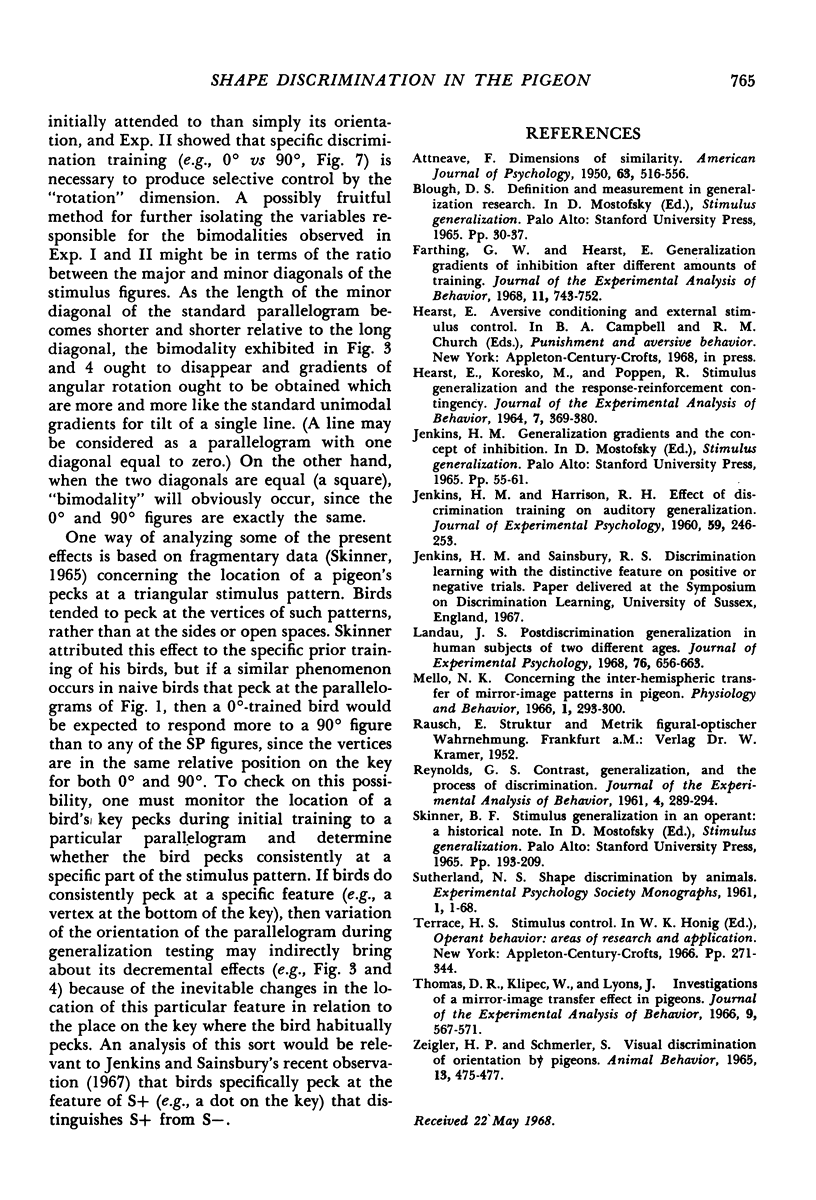
Selected References
These references are in PubMed. This may not be the complete list of references from this article.
- ATTNEAVE F. Dimensions of similarity. Am J Psychol. 1950 Oct;63(4):516–556. [PubMed] [Google Scholar]
- Farthing G. W., Hearst E. Generalization gradients of inhibition after different amounts of training. J Exp Anal Behav. 1968 Nov;11(6):743–752. doi: 10.1901/jeab.1968.11-743. [DOI] [PMC free article] [PubMed] [Google Scholar]
- HEARST E., KORESKO M. B., POPPEN R. STIMULUS GENERALIZATION AND THE RESPONSE-REINFORCEMENT CONTINGENCY. J Exp Anal Behav. 1964 Sep;7:369–380. doi: 10.1901/jeab.1964.7-369. [DOI] [PMC free article] [PubMed] [Google Scholar]
- JENKINS H. M., HARRISON R. H. Effect of discrimination training on auditory generalization. J Exp Psychol. 1960 Apr;59:246–253. doi: 10.1037/h0041661. [DOI] [PubMed] [Google Scholar]
- Landau J. S. Postdiscrimination generalization in human subjects of two different ages. J Exp Psychol. 1968 Apr;76(4):656–663. doi: 10.1037/h0025676. [DOI] [PubMed] [Google Scholar]
- REYNOLDS G. S. Contrast, generalization, and the process of discrimination. J Exp Anal Behav. 1961 Oct;4:289–294. doi: 10.1901/jeab.1961.4-289. [DOI] [PMC free article] [PubMed] [Google Scholar]
- Thomas D. R., Klipec W., Lyons J. Investigations of a mirror-image transfer effect in pigeons. J Exp Anal Behav. 1966 Sep;9(5):567–571. doi: 10.1901/jeab.1966.9-567. [DOI] [PMC free article] [PubMed] [Google Scholar]
- Zeigler H. P., Schmerler S. Visual discrimination of orientation by pigeons. Anim Behav. 1965 Oct;13(4):475–477. doi: 10.1016/0003-3472(65)90109-0. [DOI] [PubMed] [Google Scholar]


